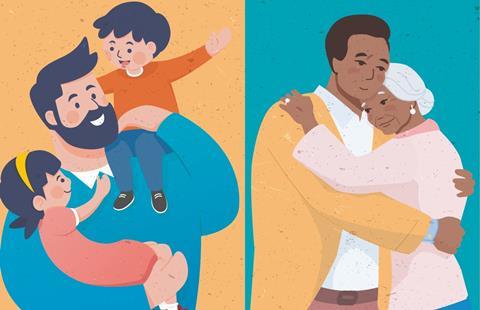The Church of England is considering alternatives to referring to God as “he” after priests asked to be allowed to use gender-neutral terms. Some have said a change in language would make the church more inclusive. But Lois Tverberg disagrees. She argues Christians should embrace the fact that God chose to reveal himself through male images in the Bible

In recent years, some Christians, including my fellow Premier Christianity columnist Chine McDonald, have decided to stop using masculine pronouns (he/him) for God. Now it has emerged the Church of England will consider the issue this spring.
The Rt Rev Dr Michael Ipgrave, Bishop of Lichfield said the Church had been “exploring the use of gendered language in relation to God for several years”.
You might think, since I’m a woman, I’d agree with a change in pronouns. But the longer I study the Bible in its original context, the more I find it at its best when we don’t whitewash over words that bother us.
You might think that by neutralising the masculine imagery in the Old Testament it will be more inclusive. What often happens though, is that ideas that challenge our thinking are obscured.
Take a look at Deuteronomy 1:31: “The Lord your God carried you, as a father carries his son, all the way you went until you reached this place.” Here we see an intimate picture of a dad lifting a little boy into his arms, carrying him on his shoulders when he’s too tired to walk.
Moses was reminding Israel of the gentle protection God showed his people as he led them out of Egypt. A gender-neutral translation renders this line: “Until you reached this very place, the Lord your God has carried you just as a parent carries a child” (Common English Bible).
By neutralising the male language, we lose the beautiful image of a man gently carrying a precious son. The concrete details become a vague non-reality. Ironically, we miss this surprising picture of fatherly tenderness when we try to take the maleness out of it.
Here’s another place where it happens, in a passage that even contains feminine imagery for God. In the NIV, God says in Isaiah 66:13: “As a mother comforts her child, so will I comfort you.” But in the Hebrew, this line says literally: “As a man is comforted by his mother, so I will comfort you.”
When you remove the masculinity by changing “man” to “child,” you remove the imagery of an adult man being comforted by his mother. In the extended families of the ancient world, mothers continued their relationships with their grown sons and acted as sources of wisdom and comfort.
What a remarkable image of a motherly relationship that God uses to describe his relationship with Israel.
Furthermore, Israel’s unique belief in a mostly masculine, monotheistic God created a culture that was remarkably less sexist and oppressive to women than the surrounding cultures. Polytheists had goddesses and priestesses, but their concern was primarily sexuality, fertility and childbirth.
When your religious worldview revolves around erotic stimulation, women become valued for that alone. In contrast, we never find a battle between the sexes going on in the Bible. Women in the Bible were generally striving for the same goals as men – the growth of their families and the prospering of Israel.
Certainly Israelite women were subject to male leadership and conformed to traditional family-centred roles. In light of their limits within society, it’s actually quite remarkable that the Bible consistently presents women as intelligent equals to their husbands.
It was Greek philosophy, not the Bible, that polarised masculinity and femininity and saw women as a defective version of humanity.
Starting with creation
In the Mesopotamian creation story, Epic of Gilgamesh, Gilgamesh demonstrates his superiority among the people of the world but becomes lonely because he has no equal. The gods wanted to create a companion for him and, surprisingly, they didn’t create a female but a male, Enkidu.
What a contrast to the creation of Adam and Eve in Genesis 2. In the original Hebrew text, all references to the first human, Adam, are neutral until God takes some of Adam’s flesh and makes a woman — ishah, in Hebrew. Only at that point is Adam called ish, a man.
The Hebrew word ishah hints at her origins from within the ish, something that we mimic in English with the words “man” and “woman”. Interestingly, Adam is never called an ish until the ishah has been separated from him. As the Bible sees it, men and women aren’t fully the image of God without each other.
A key insight is that the word usually translated as Adam’s “rib”, tzela, is never used this way in the rest of the Bible.
Rather, it always means “side” and when the phrase “one side” of something is used, it means one half, or one face of a building or object (Exodus 25:12; 26:26; 37:3).
When God takes one of Adam’s “sides”, it is as if God splits Adam in half and forms one half into Eve. Adam then calls her: “bone of my bones, and flesh of my flesh” (Genesis 2:23). He doesn’t say just “one of my bones”.
One human was separated into two – man and woman – so that they could have companionship with each other. The differences between men and women come from how they were formed; by being taken apart from each other so that one could supply what the other one lacks.
The biblical idea that a woman is the most appropriate, compatible partner for a man was revolutionary. Israel’s strict laws of sexual monogamy disallowed homosexual relationships and ensured men and women formed stable families, protecting women from exploitation.
Only when men saw women as life companions rather than sex objects were women elevated in the ancient world.
Beyond sex
You might assume that since God speaks in feminine terms at times, this displays God’s uniquely multifaceted identity, one which is beyond masculinity and femininity.
But if you look closer at the text, you actually find humans speak the same way. Look at what Paul says in Galatians 4:19: “My dear children, for whom I am again in the pains of childbirth until Christ is formed in you.”
We know that Paul is strong on traditional gender roles and condemns homosexual behaviour (see 1 Corinthians 6:9). Yet Paul has no problem describing himself using feminine characteristics. We can learn from Paul’s example and embrace the biological sex that God gave us while enjoying the admirable characteristics of the opposite gender.
I embrace the fact that God chose to reveal himself through male images in the Bible. I can love the Father and Son and enjoy the admirable differences between gender knowing that, together, male and female form the image of our loving God.





































No comments yet